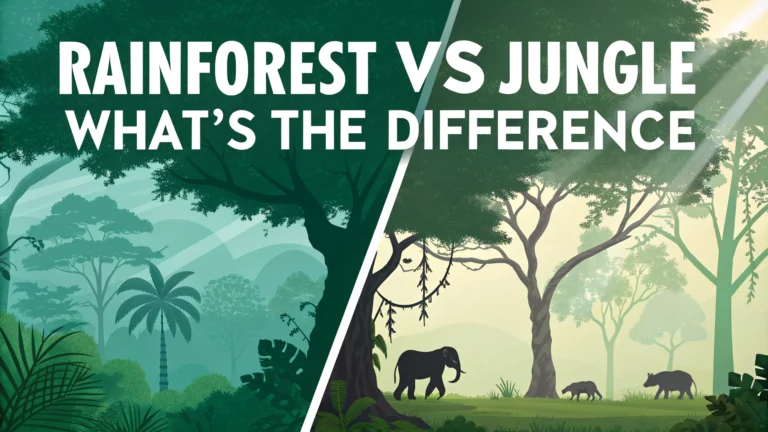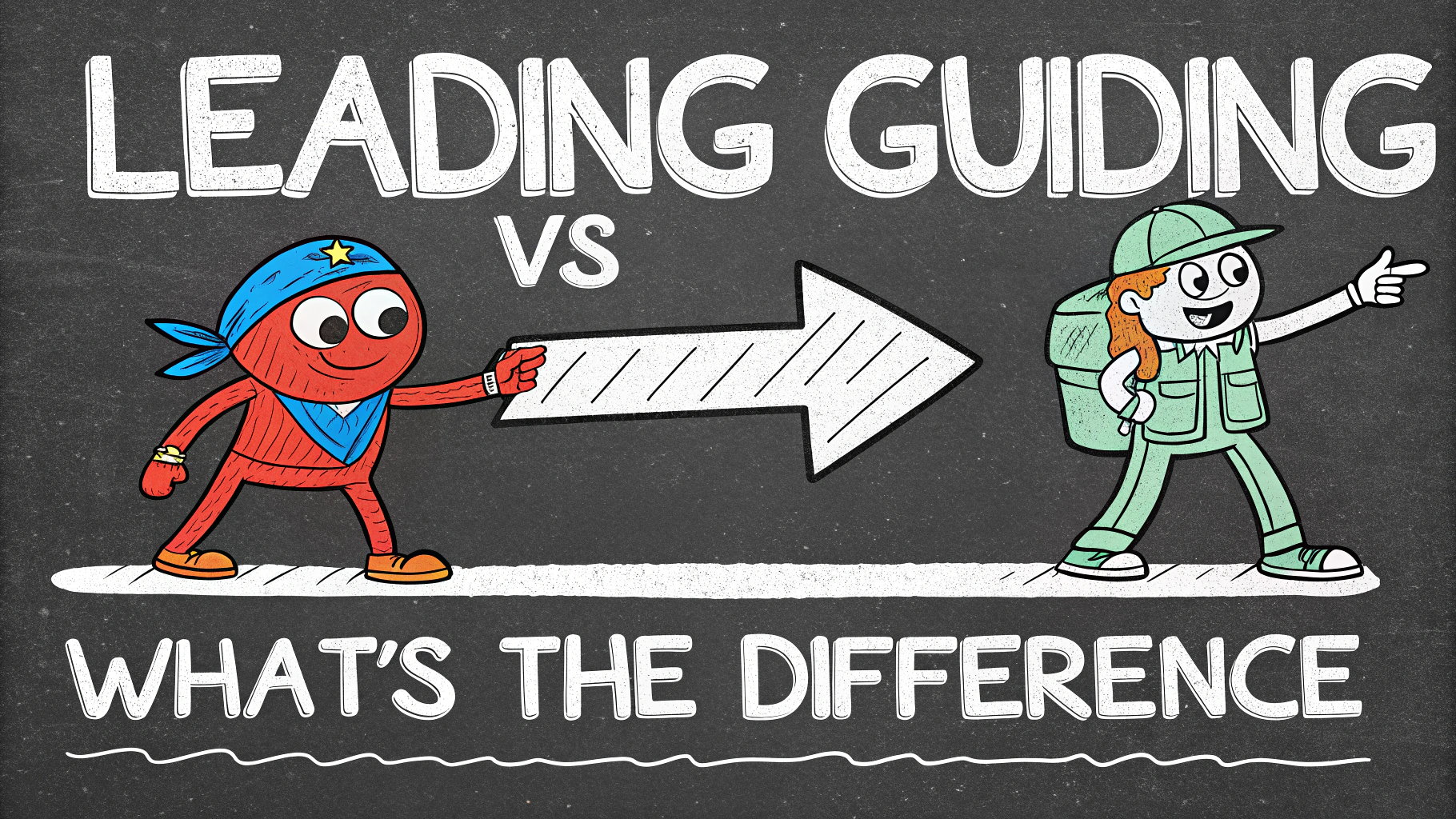Rainforests and jungles often get confused, but they’re not the same thing. This quick guide will clear up the confusion and help you understand the key differences between these lush ecosystems.
We’ll explore the unique characteristics of rainforests and jungles, their geographical locations, and the diverse plant and animal life they support. By the end, you’ll be able to spot the differences and appreciate the distinct roles these ecosystems play in our planet’s biodiversity.
Defining Rainforests: Nature’s Powerhouses
Rainforests are dense, wet forests with high annual rainfall and a consistent climate. They’re characterized by:
- Layered canopy structure
- High biodiversity
- Year-round warm temperatures
- Minimal seasonal changes
Rainforests play a crucial role in regulating the Earth’s climate and are often called the “lungs of the planet” due to their oxygen production.
Jungles: Untamed and Diverse
Jungles are a type of forest with dense vegetation at ground level. Key features include:
- Thick undergrowth
- Less defined canopy layers
- Often found in tropical and subtropical regions
- Can experience seasonal changes
Jungles are known for their wild, untamed nature and are often associated with adventure and exploration.
Geographical Distribution: Where to Find Them
Rainforests and jungles have distinct geographical locations:
| Rainforests | Jungles |
|---|---|
| Amazon Basin | Southeast Asia |
| Congo Basin | Central America |
| Southeast Asia | India |
Understanding these locations helps in recognizing the unique ecosystems and their global importance.
Biodiversity: A Comparison of Life Forms
Both rainforests and jungles are biodiversity hotspots, but they support different types of life:
- Rainforests: Home to countless species of plants, animals, and insects, many of which are found nowhere else on Earth.
- Jungles: Support a wide variety of ground-dwelling animals and plants adapted to dense undergrowth.
This diversity is crucial for maintaining ecological balance and providing resources for scientific research and medicine.
Managing Pests and Diseases in Rainforests and Jungles
Rainforests and jungles face unique challenges when it comes to pests and diseases. These ecosystems require careful management to maintain their delicate balance.
- Common pests: Insects, rodents, and invasive plant species
- Diseases: Fungal infections, bacterial blights, and viral pathogens
Effective pest and disease management in these environments often involves:
- Biological control methods
- Targeted chemical treatments (when necessary)
- Regular monitoring and early detection
Conservation Efforts: Protecting These Vital Ecosystems
Preserving rainforests and jungles is essential for maintaining global biodiversity and combating climate change. Key conservation strategies include:
- Protected areas: Establishing national parks and reserves
- Sustainable resource management: Promoting responsible logging and agriculture
- Community involvement: Engaging local populations in conservation efforts
- Reforestation: Planting trees to restore damaged areas
Organizations like the World Wildlife Fund (WWF) and Rainforest Alliance work tirelessly to protect these ecosystems.
Human Impact: Balancing Development and Preservation
Human activities significantly impact rainforests and jungles. Key issues include:
| Activity | Impact |
|---|---|
| Deforestation | Habitat loss, climate change |
| Agriculture | Soil degradation, water pollution |
| Mining | Ecosystem disruption, toxic waste |
Sustainable development practices aim to balance human needs with environmental protection. These include:
- Ecotourism
- Agroforestry
- Sustainable harvesting of non-timber forest products
The Future of Rainforests and Jungles
The future of these ecosystems depends on global action and cooperation. Key priorities include:
- Climate change mitigation: Reducing greenhouse gas emissions
- Habitat restoration: Reforesting degraded areas
- Sustainable resource use: Developing alternatives to destructive practices
- Education and awareness: Promoting understanding of these ecosystems’ importance
Technological advancements, such as satellite monitoring and AI-driven conservation tools, offer new hope for protecting these vital habitats.
Conclusion: Embracing Our Role as Stewards
Rainforests and jungles are more than just dense vegetation; they’re complex, interconnected ecosystems that play a crucial role in our planet’s health. By understanding their unique characteristics and challenges, we can better appreciate their value and work towards their preservation.
As individuals, we can contribute to the protection of these ecosystems by:
- Supporting conservation organizations
- Making sustainable consumer choices
- Educating ourselves and others about the importance of these habitats
Through collective action and informed decision-making, we can help ensure that rainforests and jungles continue to thrive for generations to come.
FAQs: Rainforest vs. Jungle
1. What’s the difference between a rainforest and a jungle?
The main differences are:
- Density: Jungles have a denser understory than rainforests
- Canopy: Rainforests have a more defined canopy structure
- Location: Rainforests are found near the equator, while jungles can exist in various climates
- Biodiversity: Rainforests generally have higher biodiversity
2. Are all rainforests considered jungles?
No, not all rainforests are jungles. While all jungles are technically forests, not all rainforests have the dense undergrowth characteristic of jungles.
3. Which animals are unique to rainforests but not found in jungles?
Some animals unique to rainforests include:
- Orangutans
- Poison dart frogs
- Sloths
- Harpy eagles
4. How do rainfall patterns differ between rainforests and jungles?
Rainforests typically receive more consistent rainfall throughout the year, often exceeding 100 inches annually. Jungles may have more seasonal variation in rainfall.
5. What are the largest rainforests in the world?
| Rainforest | Location |
|---|---|
| Amazon Rainforest | South America |
| Congo Rainforest | Central Africa |
| Southeast Asian Rainforest | Southeast Asia |
6. How do plant adaptations differ in rainforests versus jungles?
Rainforest plants often have adaptations for high rainfall and competition for light, such as drip tips and buttress roots. Jungle plants may have more diverse adaptations due to varied environments.
7. What impact does deforestation have on rainforests compared to jungles?
Deforestation in rainforests often has more severe global consequences due to their role in carbon sequestration and biodiversity. However, both ecosystems suffer from habitat loss and species extinction.
8. Can you visit rainforests and jungles as a tourist?
Yes, many rainforests and jungles offer ecotourism opportunities. Popular destinations include:
- Amazon Rainforest (Brazil, Peru)
- Daintree Rainforest (Australia)
- Borneo Rainforest (Malaysia, Indonesia)
- Costa Rican jungles
9. What are the temperature differences between rainforests and jungles?
Rainforests typically have more stable temperatures, averaging 20-30°C (68-86°F) year-round. Jungles can have more temperature variation depending on their location and altitude.
10. How do indigenous peoples live in rainforests versus jungles?
Indigenous peoples in both ecosystems have developed unique ways of life adapted to their environments. Rainforest tribes often rely more on gathering and hunting, while jungle-dwelling groups may practice more diverse subsistence strategies.
11. What are the main threats to rainforest and jungle ecosystems?
Both face threats from:
- Deforestation
- Climate change
- Agricultural expansion
- Mining and resource extraction
- Illegal logging
12. How do soil conditions differ between rainforests and jungles?
Rainforest soils are often nutrient-poor due to rapid decomposition and nutrient cycling. Jungle soils can vary more widely in composition and fertility depending on the specific ecosystem.
13. What role do rainforests and jungles play in global climate regulation?
Both ecosystems contribute to climate regulation, but rainforests, especially tropical rainforests, play a crucial role in:
- Carbon storage and sequestration
- Oxygen production
- Water cycle regulation
- Weather pattern influence



















